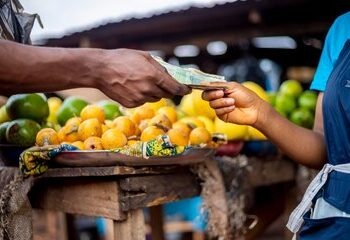Due to obstacles like expensive smartphones and devices, a lack of financial knowledge, and shaky infrastructure for financial transactions, there are still disparities in access to digital financial services. Financial inclusion appears bleak in several African countries.
Rural communities are underserved and disadvantaged, while mobile network quality and coverage remain concentrated in big cities.
Over the years, the majority of mobile money providers in Nigeria have targeted metropolitan residents who are overbanked. These people open several accounts at the largest banks in the nation and continue to be the target of the promised efficiency of fintech startups.
Serving the economically disadvantaged has a price. According to a BCG Consulting analysis, only 13 out of 249 digital banks worldwide, or 5%, are profitable, with 10 of those firms being in the Asia Pacific region.
In Africa, McKinsey’s analysis paints a starker picture, estimating that fintechs in the region face customer acquisition costs that significantly outstrip the revenue they earn per customer. Alarmingly, some companies spend up to $20 to onboard a customer, only to reap a revenue of $7 from them. This calls into question the long-term viability of the business model adopted by many of Africa’s tech-driven digital banks.
The target audience for digital banks in Africa appears to be either young or urban individuals who are already well-acquainted with smartphone applications and are likely already banked. Who then caters to the aged-rural underbanked and non-banked individuals?
While there are concerns that fintech startups are merely offering alternatives to those already catered to by conventional banks while overlooking older generations and remote communities, the fact remains that African fintech players will need to build several infrastructures to correct the current narrative. This comes at a cost.
Making Profit
We often forget that fintech startups are also businesses looking to make a profit. While they navigate the procedures to simplify access to financial services, they also create a profit path for themselves. If BCG’s report is true, then fintechs in Africa’s underdeveloped infrastructure landscape are struggling.
African fintechs struggle to establish themselves in the market and grow into successful digital banks. In doing so, they have set up strategies for customer acquisition. Competition for market leadership remains a concern.

Only three African nations—Egypt, Ghana, and Nigeria—have real-time payments and the required payment rail infrastructure, according to McKinsey’s report. Fintechs looking to expand throughout the continent may need to consider this geographic variation and adapt their strategy to each nation based on its unique traits, accessible infrastructure, regulatory frameworks, and diverse client needs.
Scaling up is merely one step in a successful growth process. Finding strategies to reduce client acquisition costs is essential. In Africa, several bottlenecks inhibit startup growth and financial inclusion. Issues such as poor infrastructure, lower disposable income, often complex regulatory landscapes, unavailability of data, and poorer customer loyalty in Africa make it more difficult for fintechs to develop sustainable and successful business models through consumer monetization. In the end, they are forced to stick with the overbanked rich individuals in the urban areas.
Growth and Inclusion are Expensive
In counting the cost of fintechs goal of financial inclusion in Africa, we understand that they are not easy to crack. Players must have thorough consumer and custom understanding. They have to move across frequently difficult terrain. They must also endure.
The fact that incumbents and telcos dominate some markets’ fintech income generation is another issue for fintech startups. Nearly all mobile money user earnings in Kenya are produced by Safaricom alone. The likes of MTN MoMo and Airtel Money are also disrupting Nigeria’s payment system.
With mobile phone adoption far outpacing bank accessibility, telcos are already making sizable profits from their fintech businesses in Africa. The combination of low-cost operational techniques and an abundance of client data is advantageous for telcos.
To meet changing client expectations, incumbent banks are under pressure to improve their digital capabilities as the digital insurgency gains strength. They have taken conservative approaches, typically seeking to improve existing digital operations.
A decade ago, bank apps were not very common in the region. Today, banks have moved more aggressively, launching digital applications that target new or existing customer segments of their services.
With about 40% of fintech revenues in the region, South Africa currently has the greatest share of value in the market. Fintech growth is being hampered by the disparate and low degrees of digital maturity across African nations.
In societies with highly developed financial institutions and digital infrastructure, like South Africa, fintech businesses can readily profit from the nation’s rich culture. Others can only persevere as they include the financially excluded and count the cost of growth.












Comments 3